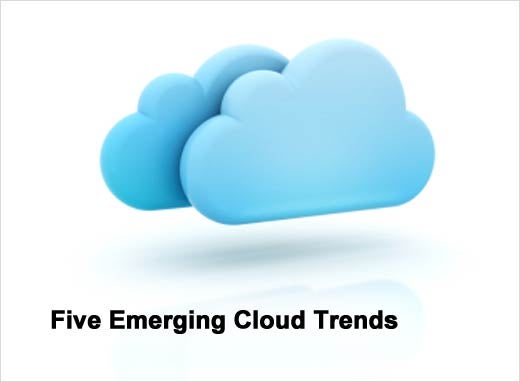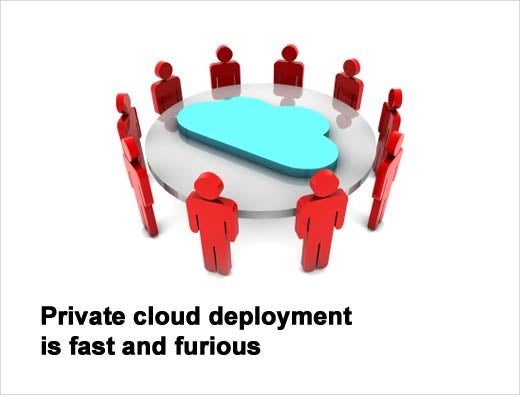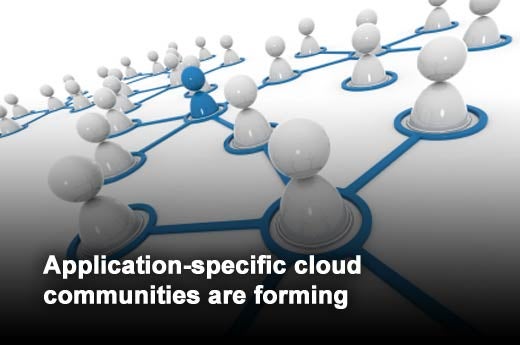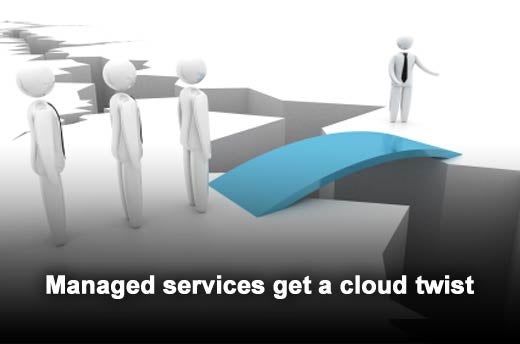The "Occupy" movement and the impact of cloud computing are both gaining significant traction worldwide, albeit for different reasons, says Logicalis, an international provider of integrated information and communications technology (ICT) solutions and services. Politics aside, Logicalis says CIOs and CTOs are becoming so comfortable with the cloud that some important trends are emerging with respect to CIOs' cloud usage.
"The cloud has become an expectation more so than a novelty in IT today, so it’s not surprising that discussions among top IT pros are taking a new turn, focusing on the type of cloud solution that can be of most benefit to a company, the best ways to deploy a cloud strategy and the kinds of value-added services that can be bundled with that cloud offering," says Vince DeLuca, COO, Logicalis.
Such discussions have led to a series of emerging trends that bear further scrutiny by the entire cloud community – vendors and users alike. To help clients quickly identify important topics for discussion in the cloud, Logicalis has compiled a list of five trends that prove there’s no reason to protest moving mission-critical data into the cloud any longer.
Click through for five trends Logicalis has identified to support moving mission-critical data to the cloud.
There has been a rapid rise in private cloud adoption among large enterprises. This isn’t really a surprise as there are a fairly robust set of infrastructures and applications that enterprise IT staff manage and they want to take advantage of the tools and technologies available in the private cloud space – such as multi-tenancy, service automation and self-service portals.
IT staffs think in terms of three core capabilities or “services stacks” that cloud computing can provide their organizations: Infrastructure-as-a-Service (IaaS), Platform-as-a-Service (PaaS) and the familiar Software-as-a-Service (SaaS). Private clouds provide a framework to streamline the delivery of these IT services to internal customers, enabling business agility while reducing cost.
Across all sectors in both large and mid-size enterprises, it’s clear that the hybrid cloud computing model – linking an internal, premises-based private cloud with the capabilities and bandwidth of public clouds – is here to stay. Companies are looking at application stratification when making decisions.
Certain types of CRM, collaboration and messaging applications are seen as appropriate for public clouds, while applications with more sensitive or private information – such as those with industry or government compliance requirements – are being architected to reside within private infrastructures or application spaces that exist within the four walls of the enterprise.
Every technology and industry has gone through cycles of consolidation and while the trend isn’t new, it seems to be one that is gaining traction in the cloud. Customers are seeking to deploy applications in different ways creating demand for consolidation of the cloud delivery models – IaaS, PaaS and SaaS – in the form of a unified stack as a service delivery model. This may be a harbinger of consolidation of cloud service providers as well, in order to provide greater economies of scale to customers.
Today, a provider may be focused on infrastructure, but with no linkage to the applications. Or a provider may be focused on software, but with no capabilities to manage their cloud-based infrastructure. There is a customer requirement for these capabilities going forward and an effort needs to be made to consolidate infrastructure and platform, bridging these two areas where integration makes the most sense. Doing so allows customers to take advantage of an elastic infrastructure with platform hooks for building and running custom applications.
In public space in particular, discussions around application-specific cloud communities are on the rise, particularly so in three central areas:
- Application performance communities – These are communities formed around the capabilities of specific processor platforms, such as Intel-based platforms and UNIX-based platforms, which handle application workloads differently.
- Regulatory communities – These are communities formed around the requirements of specific regulations and compliances, such as HIPAA in health care.
- Location-based services communities – While the cloud is location-independent, there are often many requirements and regulations to protect data that affect where it is located geographically. Multi-national companies may find that it makes sense for specific data to reside within a specific geography, for example.
Cloud computing has refueled interest in “outsourcing” tasks and organizations are again looking to managed services as they reassess their resource strategies. They are not focused on the ability to utilize a virtual machine, but are focused on the management of infrastructure and taking advantage of the services that cloud computing offers. So, the cloud has become the trigger for discussion and a renewed interest and demand for managed services.








